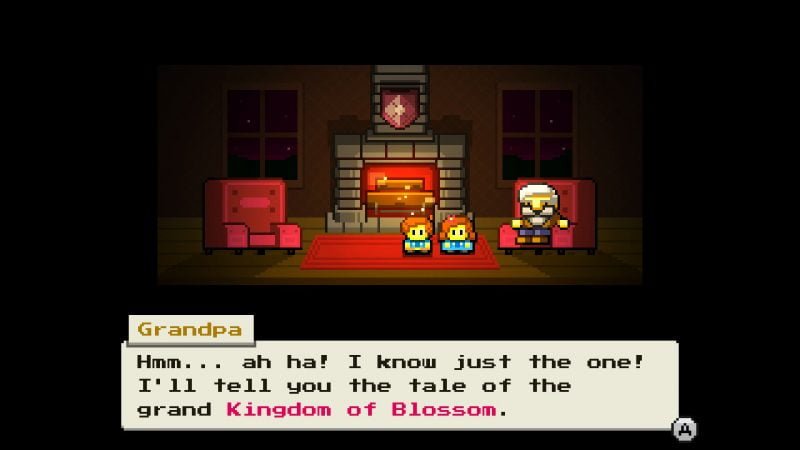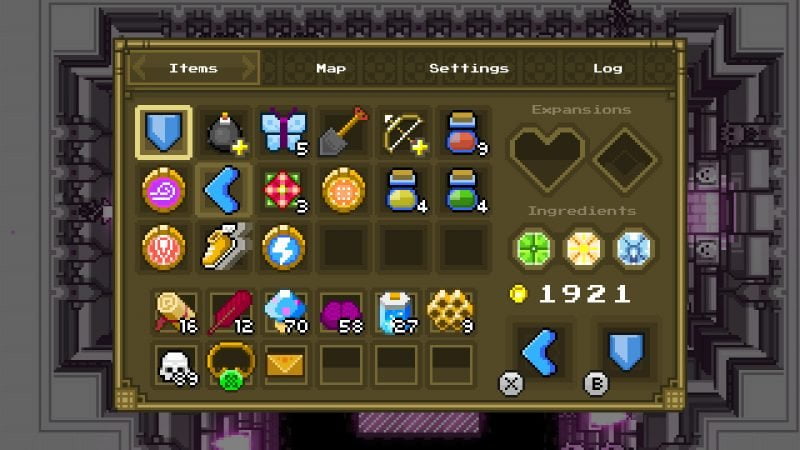Few games have impacted the gaming landscape throughout the years like the flagship Nintendo games. Mario defined fun 2D platforming, Metroid defined item-based exploration (birthing one half of an entire genre – Metroidvania), Donkey Kong defined difficult but fair platforming, and last but not least, Zelda created the equipment-reliant dungeon structure (minus Breath of the Wild). These games have inspired countless clones and tributes since their inception, and shaped how games have been made for decades. Some of these newer age games have turned out pretty well, while others have left the studio half-baked, leaving a lot to be desired. These are experiences that make you question why you aren’t simply replaying A Link To The Past instead of wasting time with a big pile of disappointment. That being said, there are a few gems out there that can teach a few things about making an impressive tribute game. Blossom Tales is one of them.
Blossom Tales, released on Steam and Nintendo Switch, puts the player in the role of Lily, a newly crowned knight in Blossom Kingdom. The game revolves around her efforts to stop a coup d’ etat by exploring the country and conquering 4 distinct dungeons, in the form of a bedtime story told by a grandfather to his grandchildren. Blossom Tales thrives where many other games flop, in the sense that it takes the tried and true formula developed over many iterations of Zelda, and injects it with a few new elements of its own. It is difficult to make a proper tribute to one of the greats, however Blossom Tales can give us a guiding hand in how this might be done.
Give Credit Where Credit Is Due
Very early on, Blossom Tales gives a nod to the Hero of Time (not Rhyme). Acknowledging the inspiration is a crucial component in making a good tribute. The slight nod is well done; referencing Link’s attire, as the grandkids don’t want to hear the same ole story about Hyrule again, leading to something new: Lily of the Blossom Kingdom. This tip of the cap is extremely brief, and if you blink you’ll miss it. However, that’s all a game needs, even if it’s something most people won’t see, such as the skeleton with an arrow through the knee from The Witcher 3.

KISS: Keep It Simple Stupid
Very rarely is it a smart idea to overcomplicate things. This is doubly true for video games, especially when making a game in the mold of one of the greats. There’s no need to add complicated systems, mechanics and physics to games that are trying to imitate a battle tested pattern. Blossom Tales does an excellent job in this department, adhering to the 2D style that brought success to A Link To the Past and many other Zelda titles. The map is easy to digest and easy to navigate, with no over complicated puzzles or anything souring the experience. At the same time, each of the four areas is distinct and gives the player a different feel when exploring. The game also offers guidance by hinting at which square of the map they need to make their way to. Blossom Tales also simplifies the number of equipment throughout the game, keeping item management simple and easily accessible.

Incremental Improvements
While a direct copy can lead to a fun experience, it can often be forgetful and make the player wistful for the real thing. A tribute game needs to add elements that improve upon what the original did so well. This is a very tricky bridge to cross, as some design choices might sound great on paper, but in practice don’t work out so well. Blossom Tales struck gold on a few strategies leading to a better player experience. Firstly, Blossom Tales adds a journal which gives players an idea on what is going on in their game, their current objective, and a general refresher on where they’re supposed to go. This is nice addition, as it helps to avoid the problem many players face when taking a break from a game, then picking it up down the road. The journal limits the too-often-found problem of having to start the game from scratch due to having no idea what they were doing. Players are also incentivized to kill certain enemies and turn in the rare enemy-specific drops (such as goo from slimes, and bones from skeletons) to specific vendors for prizes. There’s actually a reason to kill enemies instead of running past them. While not vast improvements, these small things help give the game its own flavor, separating it from its source material.
It’s incredibly difficult to make a game that takes players on a fun nostalgia tour. For every Shovel Knight and Bloodstained, there are several Poi’s and Yooka-Laylee’s. Tributes are hard things to approach, and few do it well. However from these successes, there are many things that can be learned. Blossom Tales gave us only a few distinct lessons, but those made the difference. In addition to unique settings of the four lands, and the lengthy but not tedious dungeon design, these design decisions led to a fun and enjoyable game. Hopefully more games can take a note from these types of tributes and lean more towards the positive side of the spectrum than the negative.